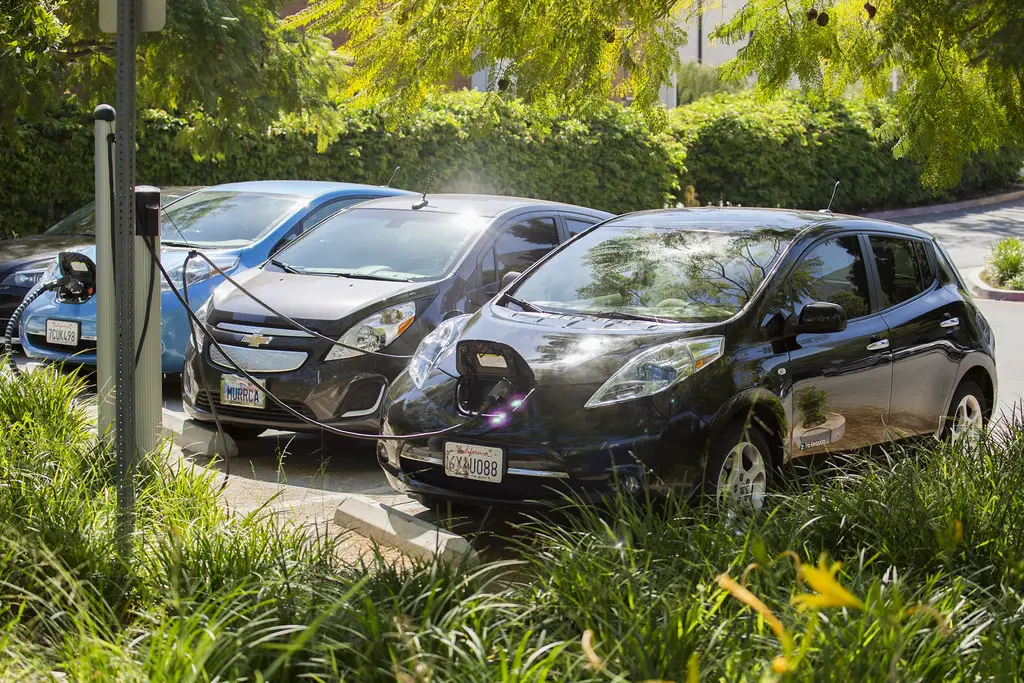As Vermont advances its commitment to electric vehicle (EV) infrastructure, municipalities find themselves navigating a delicate balancing act. The challenge lies in addressing the financial implications of EV charger maintenance and energy costs while ensuring equitable public access. This evolving dynamic reflects a learning curve as communities embrace a future increasingly shaped by EV adoption.
The Debate Over Parking and Charging Fees
For two years, the town of Brandon witnessed a unique scenario: the only parking spaces with metered fees were designated for EV chargers. This arrangement struck some, like Tim Guiles, a selectboard member and EV owner, as fundamentally unfair. At a recent Brandon selectboard meeting, the discussion reignited when the board decided to align EV charging fees with actual electricity costs, addressing the perceived inequity.
Brian Coolidge, another selectboard member, defended the original parking fee structure, emphasizing its role in covering maintenance costs and ensuring the burden did not fall on taxpayers. “We implemented it to keep things balanced,” he explained.
This conversation mirrors a broader debate across Vermont, where towns are grappling with questions of who bears the costs of EV infrastructure and how those funds should be generated.
Brandon: A Case Study in Pragmatism
In Brandon, the existing fee structure has done more than cover costs—it has generated a modest surplus, according to Seth Hopkins, the town manager. Beyond financial gains, Hopkins views the chargers as a valuable economic development tool.
“The main benefit to the town is that people charge their cars and then explore—visit shops, dine in restaurants, and attend cultural events,” Hopkins noted.
Brandon’s walkable downtown made it an ideal candidate for state funding under the Electric Vehicle Supply Equipment (EVSE) grant program, which has supported over 100 charging stations across Vermont since 2014. Bronwyn Cooke, planning and policy manager for the Department of Housing and Community Development, underscored this aspect:
“We focused on public locations where people could safely walk and engage with the community while their vehicles charged.”
To refine the model further, Brandon recently adjusted its policy: a $1.25 hourly parking fee now activates only after two hours of charging, aligning with the typical duration of a Level 2 charger session, as reported by ChargePoint, the town’s service provider.
Alternative Approaches: Barre and Bennington
North of Brandon, Barre City has taken a notably different approach. After installing chargers in 2014 under the same state grant program, Barre eventually canceled its contract with ChargePoint, citing high maintenance costs. Instead, the city opted to absorb electricity expenses, finding this more cost-effective than maintaining the service contract.
However, in July 2024, Barre introduced a $2-per-hour parking fee for EV spaces, which had become overcrowded with vehicles lingering for extended periods. Barre’s city manager, Nicolas Storellicastro, explained:
“We needed to ensure these spaces were available for regular, limited use. The fee helped us achieve that balance without public pushback.”
Meanwhile, in Bennington, the rise in EV adoption has created budgetary pressures. Although charging has been free since 2014, the town now faces mounting electricity bills—recently totaling $642 in a single month—on top of ChargePoint’s overhead.
Paul Dansereau, the director of Bennington’s Facilities, Buildings, and Grounds Department, is crafting a proposal to introduce a sustainable fee structure. The goal is to establish a self-sustaining fund to support operations, maintenance, and the expansion of charging infrastructure across the town.
State-Level Guidance and Evolving Best Practices
The Department of Housing and Community Development offers municipalities flexibility in structuring EV fees, provided they maintain clear communication with the public. Cooke views the varying strategies as a reflection of Vermont’s growing pains in adapting to EV usage:
“Parking policies are evolving alongside the infrastructure itself. Municipalities are learning to treat parking differently, which is part of a larger cultural shift.”
Patrick Murphy, state policy director for the Vermont Agency of Transportation, framed parking fees as “hold-over charges” in the EV industry. The emphasis, he noted, is less about the monetary value of the parking space and more about promoting turnover and equitable resource sharing.
The Broader Implications: Accessibility and Equity
While fee structures are essential, economic and environmental benefits must also inform policy decisions. Guiles, the Brandon selectboard member, acknowledged the necessity of fees to offset municipal costs. However, he urged municipalities to incentivize EV usage to avoid discouraging adoption:
“Yes, EV owners should contribute to road maintenance, but we must also lower barriers to entry so that more people can make the transition.”
For renters, this issue is particularly critical. Jeremy Gildren, an energy planner for the Rutland Regional Planning Commission, highlighted the “split incentives” dilemma:
“Renters often lack the ability to install home chargers, making public charging infrastructure indispensable.”
Programs like Drive Electric Vermont aim to address these challenges by using state funds to improve access to public, workplace, and multi-family charging facilities.
Conclusion: Charting Vermont’s EV Future
Vermont’s journey toward a robust EV infrastructure underscores the interplay between economic pragmatism and social equity. Each municipality’s approach—whether Brandon’s measured compromise, Barre’s strategic fees, or Bennington’s forthcoming proposals—illustrates the diversity of solutions being tested.
Ultimately, the success of these efforts will depend on maintaining a clear focus on the dual priorities of sustainability and accessibility. As Cooke aptly summarized:
“The way we think about parking and transportation is changing. These adjustments are part of a broader evolution toward a more inclusive and environmentally conscious future.”
Table: Municipal EV Charging Fee Models in Vermont
| Municipality | Fee Structure | Key Rationale | Challenges |
|---|---|---|---|
| Brandon | $1.25/hour after 2 hours | Economic development, cost recovery | Balancing fairness and costs |
| Barre City | $2/hour parking fee | Reducing long-term parking in EV spaces | Public acceptance of new fees |
| Bennington | Currently free; fee proposal pending | Establishing a self-sustaining fund | Rising electricity costs |
This thoughtful and innovative approach to EV infrastructure not only addresses today’s challenges but also lays the groundwork for a greener, more inclusive tomorrow.



